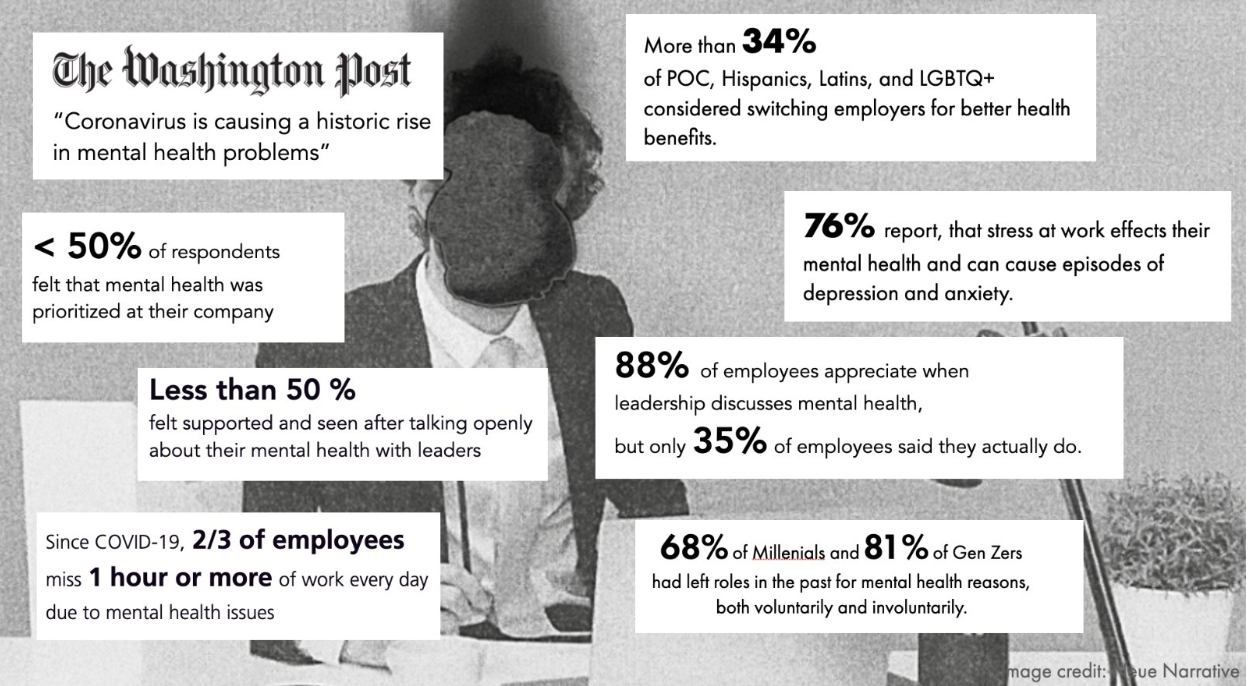Part 3: The Art of Grief at Work: Co-Designing a Grief-Sensitive Workplace
Grief can be your Greatest Strategy
Sayulita, Mexico: April 2021
Photo by Spencer Ian Harris
We need to operationalize the practice of supporting our people in their grief and mental health challenges in the workplace. It’s not enough to have a one-off training on burnout or resilience during Mental Health Awareness Month; we need a more holistic and long-term strategic approach to the wellbeing of our colleagues and organizations.
As a society, we confine grief to a short period of time; the average allocated time for workplace bereavement is 3-7 days. After the memorial service, the person who has experienced loss is expected to rebound to their previous capacity at work. The reality is that bereaved will grieve for the rest of their lives, including at work. We need a more innovative and humanistic approach to grief in the workplace. We need to show up for our people, organizations and communities beyond the funeral and early stages of grief.
Why this matters?
When we support our people in their grief and mental health with both compassion and operational rigor, we can help them be even more impactful and innovative at work in the long term.
Here’s a foundational thought starter, which brings together my experiences as a former COO of a VC-backed startup alongside a work-in-progress Masters in Counseling Psychology.
1
Co-create a robust DEI & Mental Health Strategy
Create a strategy that supports your most vulnerable and marginalized populations at work and in your community in their grief alongside the traumatic realities that may be impeding their wellbeing and performance at work. Center your strategy around 1-3 key metrics such as, “90%+ of employees feel psychologically safe, seen and supported at work” or “90%+ of employees feel they can honestly talk about their mental health at work.” Make sure track these metrics against key demographics, such as race, gender, sexuality, and ability, to identify which employees may need more support.
2
Offer a generous time off and bereavement policy.
The typical bereavement policy is usually 3-7 days — historically, applicable to just family members and only available during the onset of a death to create time for memorial service arrangements. Provide 3-4 weeks off through the first year of bereavement, alongside 1-2 weeks of grief & mental health leave after the first year for losses of all kinds.
3
Create a meeting norm with a mental health check-in to provide space for grief sensitivity.
As facilitators, my team and I like to start off our workshops with check-ins like: “How are you feeling in one word?” “Is there anything you need to name to feel honored in your humanity?” Role model vulnerability by sharing how you are authentically feeling and that it’s okay to not to be okay.
4
Meaningfully Acknowledge Grief Awareness Days.
In the States, August 30 is National Grief Awareness Day. In the UK, December 2-8 is National Grief Awareness Week. Host a learning session for people to safely and honestly share their stories of grief and healing with a skillful therapist, coach or facilitator. Read this post on creating an inclusive company calendar.
Love is Love is Love
Big Sur, California: November 2022
Photo by Spencer Ian Harris
5
Create intentional training and resources to promote your Mental Health Insurance Benefit.
Even with a robust offer that essentially makes therapy ‘free’, it can still be incredibly challenging for people to get the support they need. I often hear Heads of HR share that their people are struggling yet still not taking advantage of the benefit. Searching for a provider is exhausting and emotionally laborious. One step you can take is compiling a curated list of high-quality, in-network therapists that are available and meet the needs of your people. Therapy is still stigmatized; facilitate a session where people can safely share their own stories of grief and mental health in the workplace whilst still honoring professional boundaries.
6
Operationalize an Empathy and Enduring Grief Compassion Guide.
Uncover the specific needs and potential triggers of the person grieving. Update every year as the person’s needs may change as their grief evolves. You can see the version for the first stage of grief. You can also ask these questions more gently and informally through 1:1 if the Google Form feels too clinical. You can also incorporate these questions into a more holistic mental health & DEI empathy guide for each employee and team.
In conclusion
There are far more human-centered strategies and actions we can take to truly manifest a grief-sensitive workplace. Action begins with compassion, but also a gentle curiosity and courage to challenge the grief-negative status quo. I invite you to take one small step today by asking people how they are genuinely feeling.
What other strategic actions can we take to operationalize a grief-sensitive workplace?
Grief is a superpower, not a weakness
Playa de Los Muertos (Beach of the Dead), Sayulita, Mexico: April 2021
Photo by Spencer Ian Harris
Get in touch if you’d like support on a workshop to support the mental health, wellbeing and grief of your people.
Melissa Andrada (Mel - she/they) is a trauma-sensitive DEI Consultant, Keynote Speaker, Workshop Facilitator, Yoga Teacher and Leadership Coach, alchemizing the grief for her beloved father Tito Pamplona Andrada and dear friend Spencer Ian Harris into healing for others. They are currently pursuing a Masters in Expressive Arts Therapy with a concentration on grief at the California Institute of Integral Studies.




